Dollar Dominates After Trump’s Trade Strike| 11th July, 2025

Tariffs Boost the Dollar
On July 11, 2025, global markets reeled after U.S. President Donald Trump announced a steep 35% tariff on Canadian imports, sparking renewed trade tensions and lifting the U.S. Dollar. The U.S. Dollar Index (DXY) pushed above 97.50 as traders sought safety in the greenback. USD/CAD surged toward 1.3700, reflecting immediate pressure on the Canadian Dollar. Meanwhile, EUR/USD slipped below 1.1700 ahead of a potential U.S.-EU tariff deal, and NZD/USD retreated to the 0.6000 handle amid risk-off sentiment. The tariff shock dampened risk appetite globally and repositioned flows across major FX pairs. Markets now await U.S. Initial Jobless Claims data and European Commission responses to gauge the next direction.
USD Index Forecast
Current Price and Context
The U.S. Dollar Index (DXY) trades above 97.50, climbing steadily following President Trump’s announcement of a 35% tariff on imports from Canada. The move heightened trade tensions and fueled demand for the greenback as a defensive hedge. With markets pricing in retaliatory risks and broader economic consequences, the DXY is holding firm near multi-week highs.
Key Drivers
Geopolitical Risks: Fresh U.S. tariffs on Canadian imports and looming trade discussions with the EU have spurred global risk aversion, enhancing USD appeal.
US Economic Data: Traders await Initial Jobless Claims for signals on labor market resilience. Strong data could reinforce dollar strength.
FOMC Outcome: Fed remains cautious but has not ruled out rate cuts later in the year. Market focus stays on inflation and employment figures.
Trade Policy: Trump’s aggressive stance on tariffs injects policy uncertainty, which typically favors the USD as a reserve currency.
Monetary Policy: Rate differentials continue to support the dollar amid relatively hawkish Fed expectations versus global peers.
Technical Outlook
Trend: Bullish continuation above 97.50, nearing short-term breakout zone.
Resistance: 97.85, followed by 98.20 and 98.50.
Support: 97.30, then 96.90 and 96.50.
Forecast: If DXY holds above 97.50, a move toward 98.20 is likely. A break below 97.30 may stall momentum and reintroduce rangebound conditions.
Sentiment and Catalysts
Market Sentiment: Bullish. Risk-off flows and trade policy uncertainty have triggered renewed interest in the USD.
Catalysts: U.S. Initial Jobless Claims, Eurozone industrial production, Canadian response to tariffs, and upcoming Fed commentary.
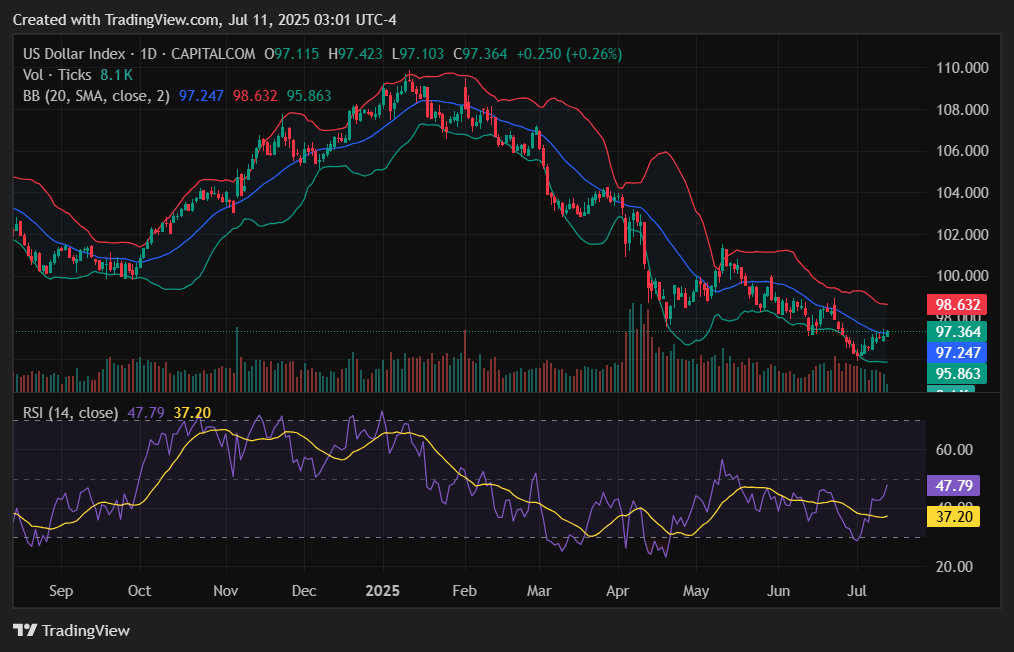
EUR/USD Forecast
Current Price and Context
EUR/USD trades just below 1.1700, facing downside pressure as the U.S. Dollar strengthens on renewed trade tensions. The pair lost momentum amid growing expectations of a potential tariff deal between the U.S. and EU, with investors remaining cautious ahead of upcoming economic releases and official responses from Brussels.
Key Drivers
Geopolitical Risks: Tariff uncertainty between the U.S. and EU weighs on the euro, with traders wary of possible retaliatory actions from European leaders.
US Economic Data: Strong U.S. data continues to support the dollar, overshadowing any short-term EUR resilience.
FOMC Outcome: The Fed’s hawkish tone underpins USD strength, narrowing the room for EUR/USD recovery.
Trade Policy: The euro faces pressure as the U.S. broadens its tariff strategy, now eyeing potential levies on EU goods.
Monetary Policy: Divergence in central bank tone (hawkish Fed vs. dovish ECB) continues to cap euro strength.
Technical Outlook
Trend: Bearish consolidation below key psychological support.
Resistance: 1.1720, then 1.1755 and 1.1790.
Support: 1.1675, followed by 1.1640 and 1.1600.
Forecast: Continued pressure below 1.1700 could expose 1.1640. A bounce above 1.1720 may spark limited upside toward 1.1755.
Sentiment and Catalysts
Market Sentiment: Bearish. Traders are favoring USD amid trade concerns and expect the euro to remain vulnerable.
Catalysts: U.S. Jobless Claims, ECB commentary, U.S.-EU trade headlines, and inflation data from both regions.
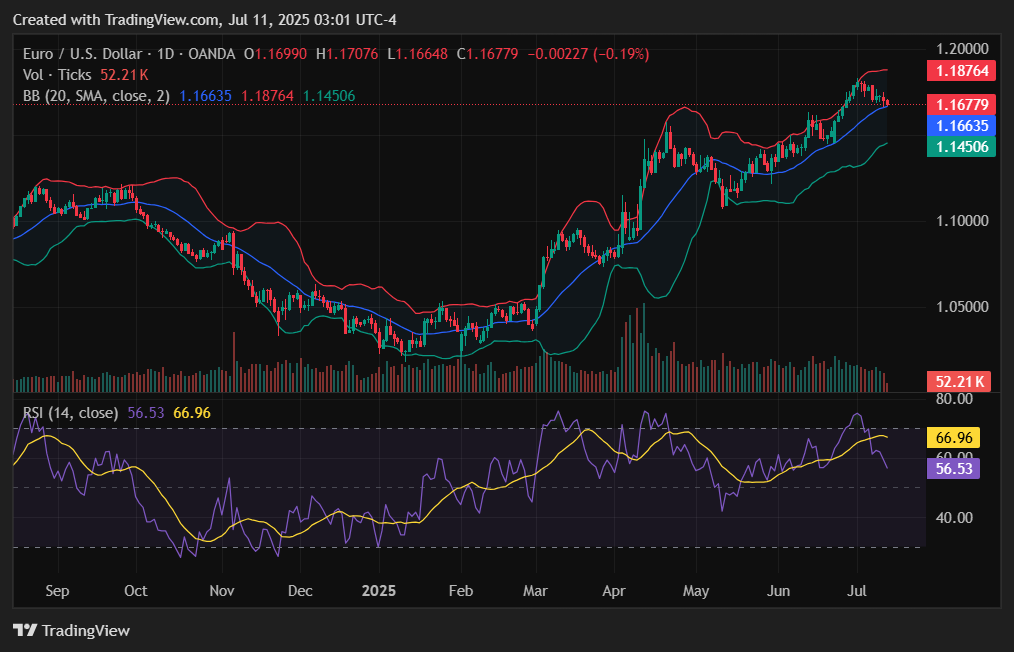
USD/CAD Forecast
Current Price and Context
USD/CAD trades just below 1.3700, rallying sharply after President Trump announced a 35% tariff on Canadian imports. The move sent shockwaves through the Canadian economy, with investors pricing in negative trade implications. The loonie weakened despite stable oil prices, as tariff-driven uncertainty overshadowed other domestic fundamentals.
Key Drivers
Geopolitical Risks: Direct trade friction with the U.S. leaves Canada vulnerable, prompting USD/CAD upside.
US Economic Data: Robust U.S. labor data supports greenback demand, pushing the pair higher.
FOMC Outcome: Fed’s policy consistency strengthens USD flows relative to CAD amid risk-off positioning.
Trade Policy: Trump’s 35% tariff announcement marks a severe shift in U.S.-Canada trade relations, fueling CAD sell-off.
Monetary Policy: BoC expected to stay on hold; rate divergence adds upward pressure on USD/CAD.
Technical Outlook
Trend: Bullish breakout from previous consolidation.
Resistance: 1.3725, then 1.3750 and 1.3800.
Support: 1.3665, then 1.3620 and 1.3580.
Forecast: A sustained break above 1.3700 may drive further gains toward 1.3750; short-term pullbacks remain supported near 1.3665.
Sentiment and Catalysts
Market Sentiment: Bullish bias persists as traders position for prolonged trade fallout.
Catalysts: Canadian GDP outlook, retaliatory tariff announcements, U.S. economic releases, and oil price volatility.
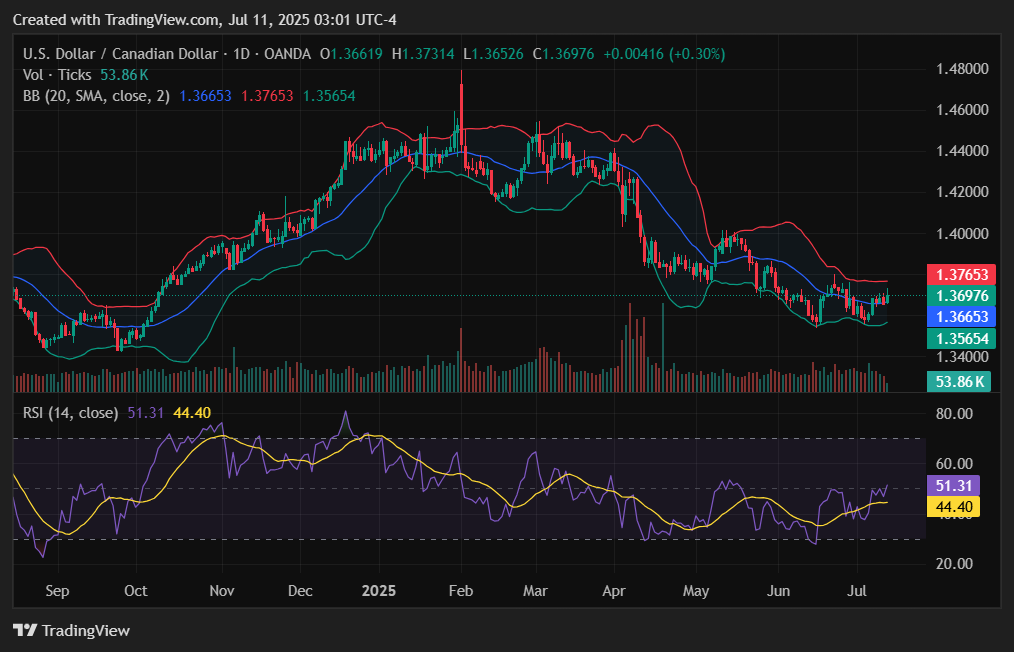
NZD/USD Forecast
Current Price and Context
NZD/USD trades slightly above 0.6000 but shows signs of weakness as rising trade tensions dent risk appetite. The pair has come under pressure amid renewed fears of global tariff wars, with markets reacting to Trump’s latest import levies. Despite a weaker USD environment, the kiwi remains subdued due to its sensitivity to global trade dynamics and soft local data.
Key Drivers
Geopolitical Risks: Escalating trade tensions globally impact high-beta currencies like the NZD; safe-haven demand limits kiwi upside.
US Economic Data: Strong U.S. fundamentals keep the USD resilient, challenging kiwi recovery.
FOMC Outcome: No major surprises from the Fed, but rate differentials remain unfavorable for NZD.
Trade Policy: Concerns over a broadening tariff war reduce risk sentiment and cap commodity-linked currency demand.
Monetary Policy: RBNZ remains cautious; traders expect prolonged dovish tone amid external shocks.
Technical Outlook
Trend: Bearish bias as the pair fails to sustain momentum above 0.6050.
Resistance: 0.6045, then 0.6080 and 0.6120.
Support: 0.5985, followed by 0.5960 and 0.5920.
Forecast: A drop below 0.5985 may open the path toward 0.5960; limited upside expected unless global risk tone improves.
Sentiment and Catalysts
Market Sentiment: Bearish to neutral as markets avoid risk-heavy assets amid trade policy uncertainty.
Catalysts: U.S. data prints, NZ inflation outlook, China’s trade figures, and tariff-related headlines.
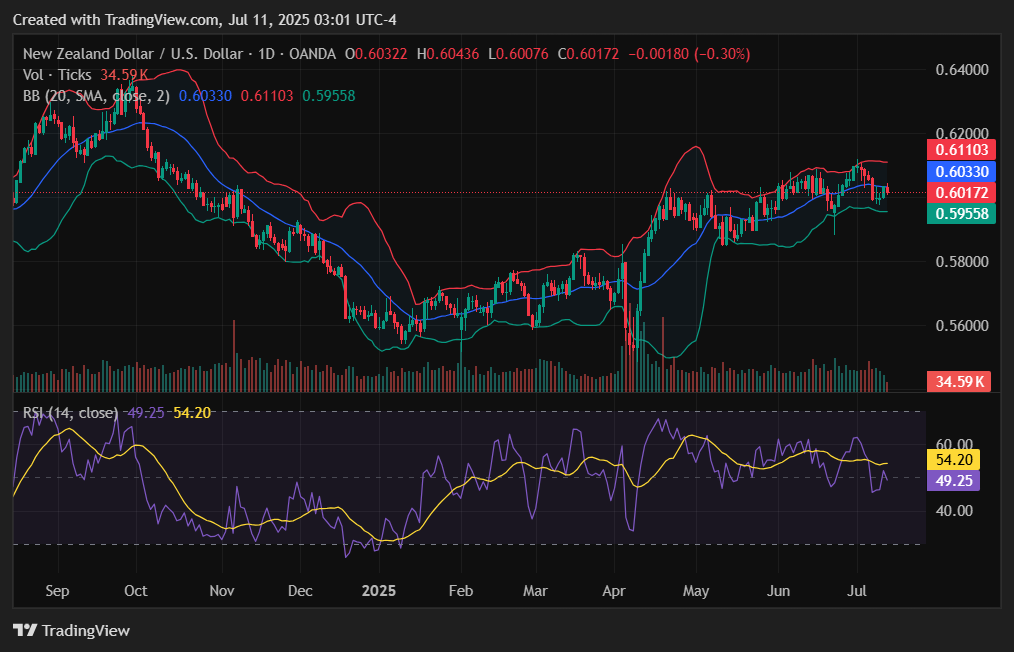
USD/JPY Forecast
Current Price and Context
USD/JPY trades near 147.00, regaining upward momentum as the U.S. Dollar strengthens broadly amid escalating tariff tensions. The Japanese Yen remains under pressure due to persistent policy divergence and diminished demand for traditional safe havens. Despite a brief intraday recovery, the yen quickly lost ground as USD strength reasserted dominance.
Key Drivers
Geopolitical Risks: Trade tensions are boosting USD demand over JPY, reversing typical safe-haven flows amid policy divergence.
US Economic Data: Solid U.S. data, including labor figures and inflation expectations, continue to support the greenback’s resilience.
FOMC Outcome: The Fed’s cautious stance, while leaving room for rate cuts, remains more hawkish than the BoJ’s inaction — favoring USD/JPY bulls.
Trade Policy: Trump’s new tariffs on Canadian imports and potential EU levies are fueling USD gains and keeping JPY on the defensive.
Monetary Policy: With the BoJ holding rates ultra-low and signaling no urgency to tighten, the widening yield gap supports further yen depreciation.
Technical Outlook
Trend:Bullish recovery, rebounding from earlier dips.
Resistance: 147.20, then 147.75 and 148.50.
Support: 146.40, followed by 145.90 and 145.20.
Forecast: A firm break above 147.20 could pave the way for 148.00+. Only a sustained drop below 146.40 would stall the current rally.
Sentiment and Catalysts
Market Sentiment: Bullish bias for USD/JPY as broader dollar strength overshadows yen stability.
Catalysts: U.S. Initial Jobless Claims, global risk sentiment, Japanese trade data, and yield spread dynamics.
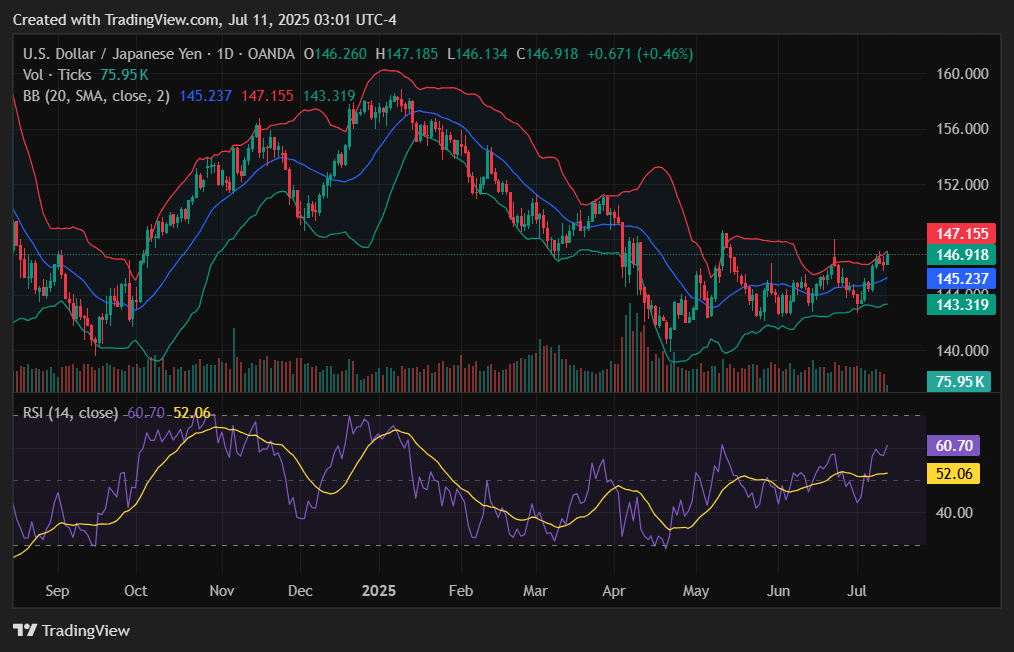
Wrap-up
The U.S. Dollar surged across the board as Trump’s tariff move reignited global trade tensions. USD/CAD jumped near 1.3700, NZD/USD weakened toward 0.6000, and EUR/USD remained under pressure below 1.1700. With trade talks in focus and data releases ahead, traders are bracing for more volatility. As risk sentiment wavers, the greenback may continue to dominate near term flows, while affected currencies like the loonie and kiwi may remain vulnerable.
Ready to trade global markets with confidence? Join Moneta Markets today and unlock 1000+ instruments, ultra-fast execution, ECN spreads from 0.0 pips, and more! Start now with Moneta Markets!





















